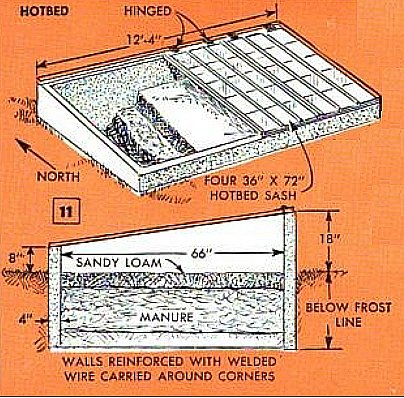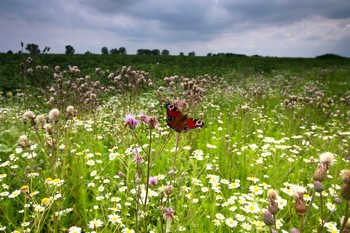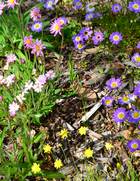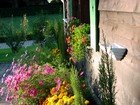Spring Gardening Tips on Early Planting
Spring Gardening Tips for Solar Gardening
One of the ways of doing this, even with cold-sensitive melons and cucumber is through effective solar gardening. Now, there is not much new about using the sun.Gardeners have known for centuries that the greenhouse effect, the trapping of solar heat, can be used to extend the growing season – starting earlier in the spring and gardening longer into the fall.
But some solar garden applications don’t have to involve an expensive greenhouse that not many people have. One could just use simple plastic sheeting however it is messy and not nearly as versatile as other solar options.
Spring Gardening Tips using a Cloche
Cloches are an excellent alternative. They are portable, mini-greenhouses where you can use jars, jugs, cones or transparent boxes over seeds or seedling and removed or ventilated when their interior becomes too intense. Even a simple cloche can help you plant 3-4 weeks earlier than usual or help protect the cold-sensitive seedlings of tomatoes and peppers.You can make your own cloches by cutting out the bottoms of plastic milk jugs or by using inverted gallon-sized glass or plastic jars. Delicatessens often sell or discard their used gallon pickle jars. So if you have a delicatessen in your area, and you are looking for cloches for your spring planting, now is the time to ask, before someone beats you to it!
Spring Gardening Tips using Tent Cloches
Large cloches shaped like a tent or barn may also be homemade. The advantages of having this type of cloche is that it can be extended to cover an entire area, rather than fiddling around with individual plants. This is when your sheet of plastic can come in handy. Drape it over wire hoops, or stakes, and weight it down in position with a few strategically placed stones or bricks.None of these solutions will make your vegetable garden aesthetically pleasing, but it will be temporary, and the rewards will be well worth it when you will be harvesting weeks before your neighbors. And let me say, that yes, plastic is non-biodegradable, and a curse to the environment.
I am well aware of that, before someone writes in to remind me of that fact. I had one such letter this week from a reader asking me why I had advocated the use of polystyrene in the soil for aerating pot plants, and did I not know what a curse it was to the environment too. Yes, it is, but like plastic, it has its uses and by using plastic in this way we are recycling its original use.
Spring Gardening Tips for Polytunnels
So how do you build a polytunnel? Insert 10 gage steel rods, about as thick as a drinking straw along the edge of where you want to protect. The rods are then bent over the bed and forced into the ground. This forms a series of hoops about 14 inches high at their centers.
Cover the hoops with clear polyethylene sheeting, thinner than the standard 4 mil sheeting as it is too heavy and will sag between the hoops. You now have an oversized plastic caterpillar structure in your vegetable patch. However, you really have to be vigilant with polytunnels once the sun hits the tunnel.
Make sure that you have cut vent holes in your plastic sheeting to ensure that you don’t cook your crops. Or, if you buy the 1.5 mil slit polytunnel plastic that is specifically sold for tunnels, then you won’t have to bother. You can also get complete kits now that come with plastic, wire rods, black plastic weed mulch and instructions on how to put it all together.
Spring Gardening Tips using Cold and Hot Frames

A hotbed or hot frame showing dimensions and plans for construction
Hot frames can solve this problem by including a heat source. Manure is usually used for this purpose. It is dug in several feet below the frame.
As the manure ferments it produces a gentle bottom heat that is ideal for early spring seed germination and developing seedlings. However, if you live in urban areas you may not be able to do this due to zoning laws or problems with neighbors who may object to having a load of the smelly stuff delivered next door.
If you are going to build a hot or cold frame make sure that they have a southern exposure if you live in the northern hemisphere, and preferably should be located in a sheltered area where drainage is good.
Whatever method you use, you will be sure that your plants will benefit from the protection and as long as you make sure that they don’t cook and overheat in their protective surroundings.
The 5 Worst Things about Spring Gardening

1) Slug invasions
2) Packed Garden Centers
3) Late Frosts
4) Back-Breaking Work for a few Months
5) Realizing in the early summer that you have forgotten to sow or set particular plants and now it's too late!
If you would like to advertise your farm in Europe for free because you need some help on the farm to pick those crops, or whatever, see our section on farming jobs worldwide. Or, if you want to advertise your farm produce, farm accommodation or a farm service look at our section Advertise your Farm. Please feel free to contact us for any further inquiries.
Leave a Comment
Do you have anything that you would like to add after reading this page? We would love to hear your thoughts. If you can add additional information to what has been written here you will be adding value to the website! No need to have any special skills - just type and submit. We will do the rest!
Our Free Monthly Homesteading Newsletter
Please
check
back from
time to time for new updates to our homesteading website or get our
latest news via our free monthly homesteading newsletter. Sign up
below. There is
always new information being added, almost on a daily basis, just for
you! We hope to see you again!








New! Comments
Do you have something of value to add? Leave me a comment in the box below.